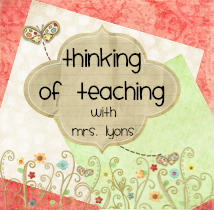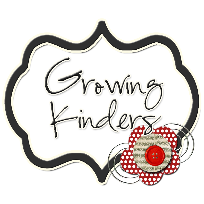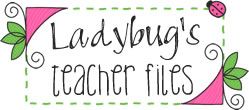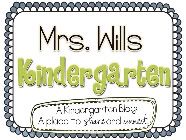I'm finding this book really interesting so far. I'll be headed to Sharon Taberski's workshop tomorrow eveing and I'm sure will learn a lot more to share with everyone then.
 Sharon's model of the pillars of reading makes a whole lot of sense. It makes sense that reading, writing, and talking would be foundational for understanding; that each of the pillars would be instrumental in holding up comprehension. Comprehension as one piece of reading does not make sense. Comprehension as the end goal does.
Sharon's model of the pillars of reading makes a whole lot of sense. It makes sense that reading, writing, and talking would be foundational for understanding; that each of the pillars would be instrumental in holding up comprehension. Comprehension as one piece of reading does not make sense. Comprehension as the end goal does.
While reading the first chapter I thought a lot about which of the pillars I use in my classroom right now. I don't tend to spend as much time on reading-writing connections as I do on having a repertoire of strategies. I know I need to spend a lot of time on background knowledge. Many of my students don't have a wide variety of experiences to draw from and when I taught kindergarten I took them on many field trips, hoping to fill in gaps and exapand their knowledge of a variety of things. Now teaching first grade I take my students on a handful of field trips each year but I don't give them nearly as much background experience. I give the excuse there's not enough time ... and there isn't. But if background knowledge is as important as Sharon says it is, maybe I should spend a little more time forming it.
I do spend a lot of time helping my students to become accurate/fluent readers. One of my students this past year was showing consistently that he was just below where he should be. I couldn't get him in to get extra help from our resource teacher because I had three others much further behind than him. So I funneled other resources to give this little boy the extra one-on-one direct instruction and review that I knew he needed to pick up the pace. I was able to meet with him to conference one-on-one with his reading four days a week and I requested a volunteer to meet with him twice a week to preview his stories, using echo reading to increase his fluency as well as go through cards of high frequency words. This little boy came up from being consistently just below to reading at the end of the year instructionally at an end of the year second grade level. It's when you work so hard to make a difference that you feel best about what you're doing. Working with this little boy was no exception and when he gave me a letter on the last day of school, tears came to my eyes as I read it.

Dear Ms. Balek I ben happy wen you were with me and you were nise to me thank you for making me smart and thank you for making me happy. thanks for reading this good bye
According to Taberski, literacy essentials include ...
* Children need us to be their advocates.
* Children need ample opportunities to read widely and across genres, to write texts for others to comprehend, and to engage in thoughtful conversation.
* Children need to read accurately and fluently with comprehension.
* Children need to acquire background knowledge to bring to texts they read.
* Children need to extend their oral language and vocabulary, and capitalize on how they enhance reading comprehension.
*Children need to appreciate not only how reading impacts writing, but how their experience as writers enables them to adopt an insider's stance as they read.
* Children need to acquire a repertoire of meta-cognitive strategies to help them navigate difficult texts and reconstruct meaning when it breaks down. These strategies should be presented in a developmentally appropriate an systematic way thruoghout the elementary grades.
* Children need to engage in an assortment of carefully selected learning experiences presented in whole-class, small-group, and one-to-one settings.
The quote that I enjoy most from this first chapter is "Children today are learning to read, write, ride bikes, do cartwheels, and ask questions in a world that is more anxious than it was a decade ago. Many adults are not as sure-footed or optimistic as they were in earlier generations, and so all the more reason to teach in a manner that is nurturing and highly responsive to each child."


 < /a>
< /a>

 tion.
tion.





 I've been teaching first grade for the past two years. The first year I kept the same basic room arrangement as the previous first grade teacher and had desks. Our rooms are fairly narrow and there was only one way I could arrange the desks having 16 students. And there was not much room to move. I spent a lot of time that year teaching my kids how to keep their desks neat inside and it worked pretty well for most of them. Only the really messy kids had trouble.
I've been teaching first grade for the past two years. The first year I kept the same basic room arrangement as the previous first grade teacher and had desks. Our rooms are fairly narrow and there was only one way I could arrange the desks having 16 students. And there was not much room to move. I spent a lot of time that year teaching my kids how to keep their desks neat inside and it worked pretty well for most of them. Only the really messy kids had trouble.  This year I had 16. Seven students were able to sit at the kidney table and six sat at the rectangle table. I also have a table that I placed at the back of the room for the math area. There are four stools up to this table and the remaining three kids sat at this table when doing their work. I originally planned on starting the year with kids choosing where they want to sit to work ... the whole less seats than kids theory, but I just couldn't get it to work. There were too many times I wanted everyone's eyes and the dimensions of the room made it difficult for this to happen. I might try again next year. This year I tried getting everyone's attention using a clapping pattern. Then they would repeat back to me. I'd like to try a
This year I had 16. Seven students were able to sit at the kidney table and six sat at the rectangle table. I also have a table that I placed at the back of the room for the math area. There are four stools up to this table and the remaining three kids sat at this table when doing their work. I originally planned on starting the year with kids choosing where they want to sit to work ... the whole less seats than kids theory, but I just couldn't get it to work. There were too many times I wanted everyone's eyes and the dimensions of the room made it difficult for this to happen. I might try again next year. This year I tried getting everyone's attention using a clapping pattern. Then they would repeat back to me. I'd like to try a  For the past couple of years I have continued to have community supplies in a centrally located area of the room. I buy supplies at the beginning of the year with my classroom budget so in the past this has seemed the most natural way to handle them. However, I get frustrated by the lack of ownership kids feel over the supplies and therefore how much supplies get trashed. I would like students to have their own supplies next year which they must replenish by "buying" from me using their Balekbucks they earn by turning in homework and doing their class jobs.
For the past couple of years I have continued to have community supplies in a centrally located area of the room. I buy supplies at the beginning of the year with my classroom budget so in the past this has seemed the most natural way to handle them. However, I get frustrated by the lack of ownership kids feel over the supplies and therefore how much supplies get trashed. I would like students to have their own supplies next year which they must replenish by "buying" from me using their Balekbucks they earn by turning in homework and doing their class jobs.







